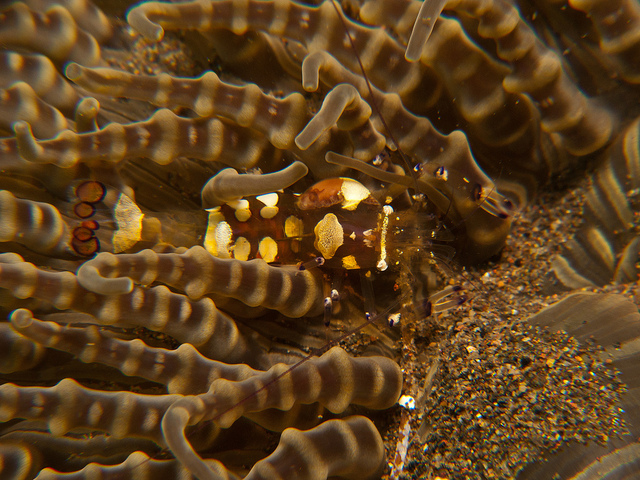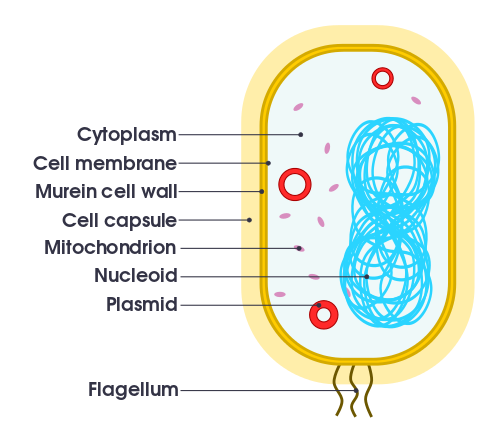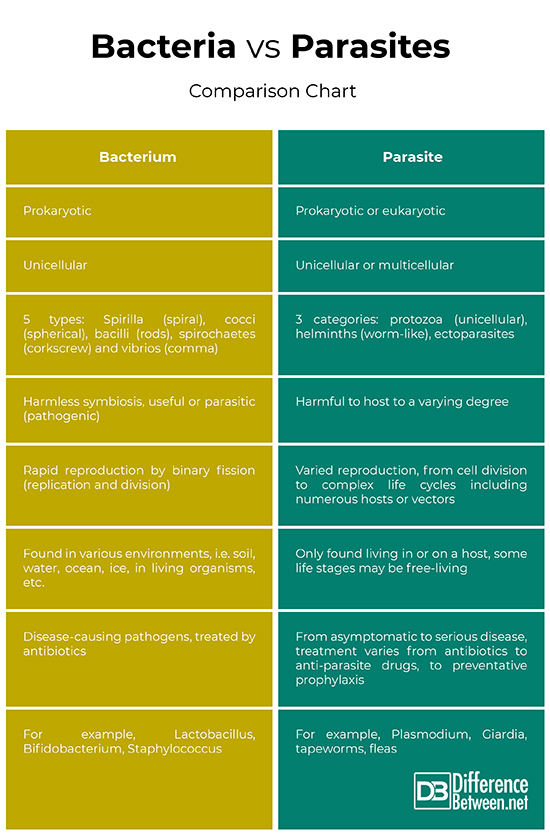Difference Between Parasites and Bacteria
Bacteria (singular bacterium) are single-celled organisms that occur in every environment, from the soil to water, to living organisms, and even extreme habitats such as sea vents. Parasites are organisms that spend most of their life cycle within the body of another organism, usually harming its host to a certain degree. These can be unicellular or multicellular organisms from a wide range of genera. Some bacteria do live as parasites, although these are a relatively few.
What is a Parasite?
A parasite is any organism, from unicellular to multicellular organisms, that lives in or on a host, negatively impacting the host to a certain degree since they feed off the host tissue. They can live on a single host, or have complex life cycles which involve different hosts.
There are three kinds of parasites that can live in humans and cause disease: protozoa, helminths, and ectoparasites. Protozoa are unicellular, microscopic organisms that are able to multiply in their host. In some cases, parasites with multiple life stages have a protozoan life stage. Helminths are larger, often visible with the naked eye, worm-like parasites, which include flatworms, thorny-headed worms, and roundworms. Ectoparasites include any parasite that lives or forages off the body surface, including mosquitoes, ticks, lice and so on. These ectoparasites may act as vectors for protozoic parasites as well.
Transmission of parasites from one host to another can occur either by a fecal-oral route or by vector transmission (an organism such as an arthropod in which the parasite can survive to infect another host).
What is a Bacterium?
The bacteria are small single-celled organisms, often also referred to as microbes. These unicellular organisms may cluster together to form a chain or colony of sorts. Although classified as living organisms, bacteria have a simple design, it lacks a nuclear membrane and it has no membrane-bound organelles. It also has a cell wall, sometimes referred to as a cytoskeleton. DNA is found in the cytoplasm, where it is arranged in a circular loop. A second DNA loop may be present, known as a plasmid. These plasmids usually contain genes offering some advantage to the bacteria, for example, resistance to a certain antibiotic. There are five different basic shapes of bacteria, according to which they are also classified. The bacterial shapes and types include spiral-shaped spirilla, spherical cocci, rod-like bacilli, corkscrew-shaped spirochaetes and lastly, the comma-like vibrios.
The bacteria mainly reproduce by binary fission, where the DNA replicates and divides in two, after which the bacterial cell can split to form two daughter cells that are genetically identical to the parent cell. These two daughter cells, in turn, will divide to produce 4 new cells, and so on. This allows for a rapid increase in a bacterial population, usually in a short time span.
Parasites Vs. Bacteria
1. Classification
Bacteria are prokaryotic microorganisms belonging to the domain Archaea and Bacteria. The parasites range from unicellular organisms like bacteria or protozoa to multicellular organisms like arthropods, hence the classification varies since it includes some prokaryotes and eukaryotes.
2. Types
There are 5 types of bacteria classified according to their shapes: Spirilla (spiral), cocci (spherical), bacilli (rods), spirochaetes (corkscrew) and vibrios (comma).
There are three kinds of parasites that affect humans, the protozoa (unicellular, including some bacteria), helminths and ectoparasites (living on the external body surface).
3. Life History
Bacteria are single-celled organisms that reproduce by binary fission, resulting in two daughter cells that are genetically identical to the original bacterial cell. Some may form endospores, which are very resistant cells that remain dormant until conditions are favorable.
Parasites are either completely dependent on their host or only for part of their life cycle. Some parasites multiply by cellular division, while larger and more complex parasites may have intricate life cycles involving various intermediate hosts and vectors.
4. Habitats
Bacteria are everywhere on earth –in the ocean, the soil, icy environments, in or on the human body and any other habitat imaginable. The association with other living organisms can differ, being commensalism (no benefit or harm to host), mutualism (both benefits) or parasitism (host is harmed, and these are referred to as pathogens).
Parasites only reside in a living host, such as a plant, animal or human. The degree of harm caused by the parasite varies. Some of the stages of the parasites life cycle may occur in the environment, but since it occupies a host for part of its life cycle it is still considered a parasite.
5. Pathology and Treatment
The rapid multiplication of bacteria can cause a quick onset of symptoms of bacterial invasion of the human body. Some bacterial infections include anthrax, syphilis, cholera, and the bubonic plague. These infections are treated with antibiotics to kill the bacteria, although this may result in antibiotic resistance.
For parasitic infection, symptoms vary according to the parasite type, with some show little to no symptoms while others cause intense disease (often depending on the load of infection). This means the treatment ranges from antibiotics to anti-parasitic drugs or prophylaxis to prevent infection.
6. Abundance
Bacteria are found in all habitats in huge numbers. The different kinds of bacteria are extremely diverse. For example, on the human body, there are more bacterial cells present than there are human cells.
In nature, parasitism makes up one of the most common life strategies, even though it is not a very conspicuous part of an ecosystem. The parasites that affect humans have been controlled to a large degree, although parasites are fairly common in less developed regions with little to no access to proper sanitation and clean food and water.
7. Relevance
Bacteria are present in every ecosystem on earth and are vital to the functioning of most of those ecosystems. Within the human digestive system, bacteria aid in digestion. Soil bacteria aid in nitrogen fixation and nutrient cycling by decomposition of plant and animal matter. It is useful in manufacturing certain fermented foods such as soy sauce and yogurt, it is widely used in farming, it can be applied in mining certain metals and various other fields like biotechnology.
On the other hand, parasites do not provide any benefits to their host since it is feeding and growing on energy supplied by the host.
Bacteria vs Parasites : Comparison Chart
- Difference Between Bactericidal and Bacteriostatic - November 29, 2018
- Dfference Between COPD and Smoking - November 19, 2018
- Difference Between Parasites and Bacteria - November 13, 2018
Search DifferenceBetween.net :
Leave a Response
References :
[0]Poulin, Robert. “Network analysis shining light on parasite ecology and diversity.” Trends in parasitology 26. 10 (2010): 492-498.
[1]Schmidt, Gerald D., Larry S. Roberts, and John Janovy. Foundations of parasitology. Times Mirror/Mosby College Pub., 1989.
[2]Whitman, William B., David C. Coleman, and William J. Wiebe. “Prokaryotes: the unseen majority.” Proceedings of the National Academy of Sciences 95. 12 (1998): 6578-6583.
[3]Williams, Caroline. “Who are you calling simple?”. New Scientist 211. 2821 (2011): 38-41.
[4]Image credit: https://upload.wikimedia.org/wikipedia/commons/thumb/2/2b/Simple_diagram_of_bacterium_%28en%29.svg/500px-Simple_diagram_of_bacterium_%28en%29.svg.png
[5]Image credit: https://www.flickr.com/photos/silkebaron/14497895097/



